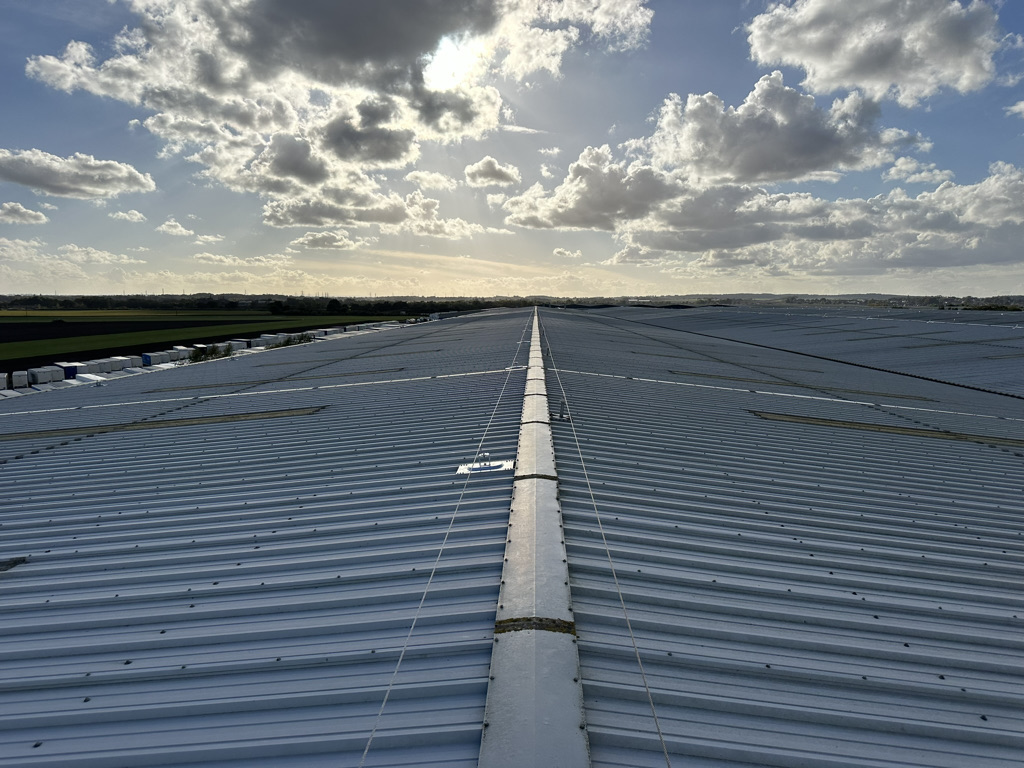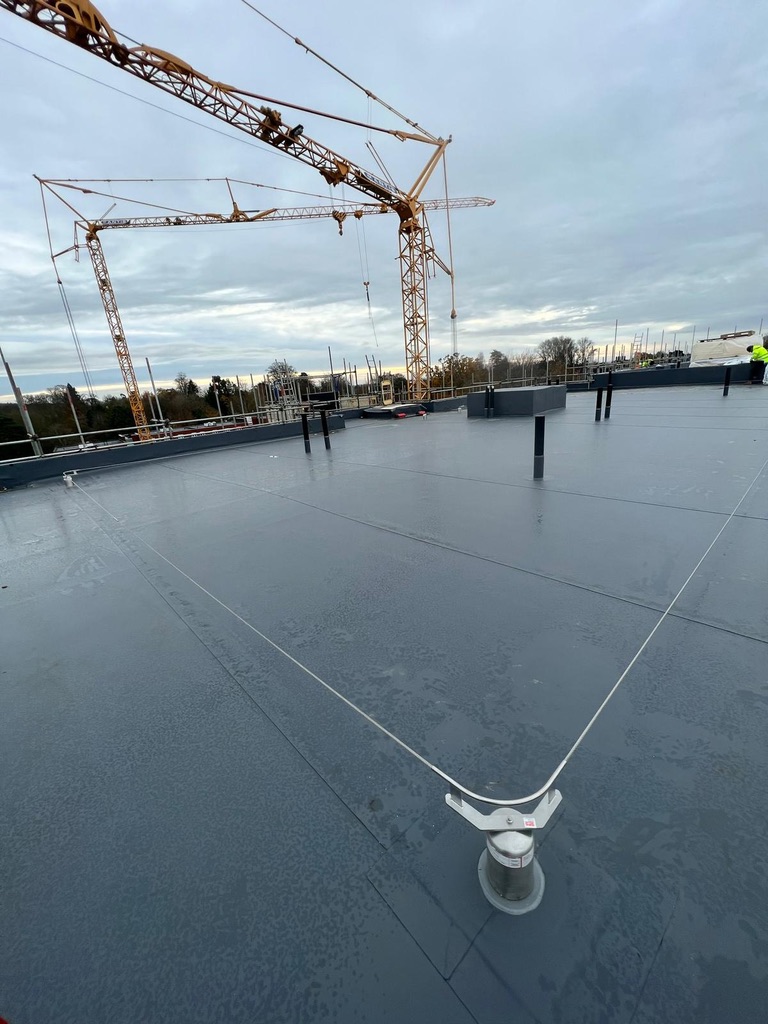Fall Arrest Systems
When a work restraint system cannot be feasibly offered, a fall arrest system can then be considered. Fall arrest systems are designed to ‘limit the consequences of a fall should it occur’.
Lifeline system will arrest a users’ fall, only if the required fall clearance has been allowed.
Fall clearances must be factored in when a fall arrest system is designed, considering the following factors;
- Building height
- Free fall distance through fragile roof areas/roof lights/canopies etc
- Free fall distance from roof edges
- To the ground
- Lower level roofs/adjacent buildings
Although fall arrest systems are often employed to give a user full roof access, they come with major disadvantages, such as:
- They do not stop a fall from height occurring as the user has flexibility of PPE lengths.
- They can only be used on buildings with the required free fall clearance from all fall hazards including through roof lights.
- A full rescue plan must be in place to return the user to safety, often this is overlooked.
- The users must be trained so they can use extra PPE equipment safely including extended
Free-fall Clearances
Free fall clearances are often overlooked when a fall arrest system is designed.
It is imperative they are calculated using a calculation programme by the manufacturer, to prove that if a fall was to occur, the distances required for the system to effectively arrest the users fall can be assured.
Once system deflection and wire elongation is known, this distance can be added to the following measurements to calculate a free fall clearance distance:
- Users Height (A)
- Lanyard Length (B)
- Deployed shock absorber length (C)
- Safety Factor (D)
= Minimum free fall clearance required (Z)



A fall arrest system, often referred to as a “mansafe system”, is designed to prevent or arrest the fall of a person working at heights.
Mansafe systems comprising stainless steel wire rope, posts and fixings provide users with an approved, tested and inspected method of safe access/work. These systems can be horizontal, vertical and overhead.
Testing such systems is crucial to ensure their effectiveness and compliance with safety standards.
There are a number of different aspects to testing:
- A visual inspection is required regularly for visible signs of wear, damage or deterioration.
- Load testing ensures the system can withstand the forces it may experience during a fall. This test verifies that the anchor points, connectors and lifelines meet the specified load requirements.
- Drop testing of fall protection devices ensure they activate as intended during a fall.
- Checking the condition of connectors, such as carabiners and hooks, ensures they are functioning correctly or whether remedial work or replacements are required.
- Inspecting lifelines, lanyards and webbing for signs of fraying, abrasion or other damage is essential. Checks are also needed for any distortions or irregularities in the structure of the materials.
- If the system includes retractable lanyards, their functionality should be tested to ensure proper retraction and locking.
- Anchor points are tested for stability and integrity; testing verifies that they are securely fastened to a structure that can support the required loads.
- If applicable, shock absorbers should be checked for signs of damage and correct function.
- Manufacturer’s documentation for the fall arrest system should be reviewed to ensure it complies with industry standards.
- All users of fall arrest systems should be trained on the proper use and its inspection. Refresher training should also be provided periodically.
- Records should be kept of all inspections, testing and any key maintenance of the fall arrest system.
WE WILL PROVIDE THE BEST SOLUTION FOR YOUR REQUIREMENTS
Not sure what solution you need? Do you want to prevent people from reaching the edge of a roof/fall hazard, or do users need to work freely on a roof without any restrictions? Dash4safety team can help.
Our qualified engineers will complete a site survey or work to your drawings/specifications to determine the most appropriate solution for your roof type, user requirements and budget.
Fall arrest and fall restraint lifeline systems have been tested for use on most roof types and conform to current standards, including:
- BS EN 795 2012. BS8610:12017 BS7883:2019

